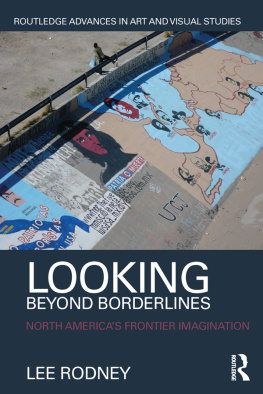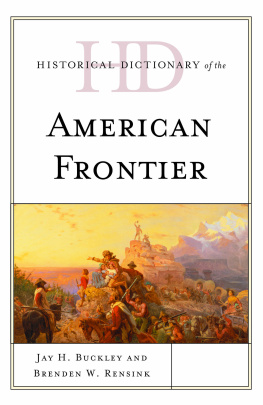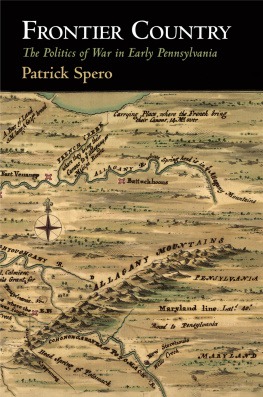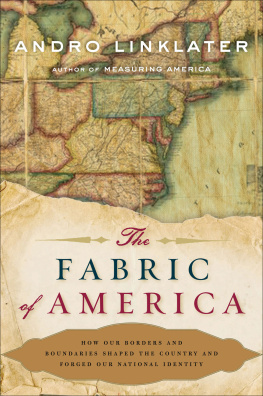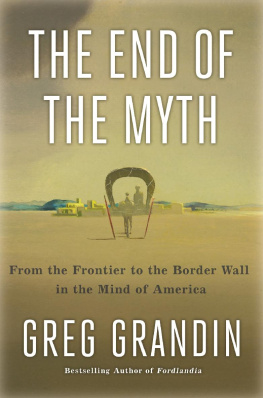Looking Beyond Borderlines
American territorial borders have undergone significant and unparalleled changes in the last decade. They serve as a powerful and emotionally charged locus for American national identity that correlates with the historical idea of the frontier. But the concept of the frontier, so central to American identity throughout modern history, has all but disappeared in contemporary representation while the border has served to uncomfortably fill the void left in the spatial imagination of American culture.
This book focuses on the shifting relationship between borders and frontiers in North America, specifically the ways in which they have been imaged and imagined since their formation in the 19th century and how tropes of visuality are central to their production and meaning. Rodney links ongoing discussions in political geography and visual culture in new ways to demonstrate how contemporary American borders exhibit security as a display strategy that is resisted and undermined through a variety of cultural practices.
Lee Rodney is Associate Professor of Media Art Histories and Visual Culture at the University of Windsor where she is currently Co-Director of the InTerminus Research Group. An interdisciplinary writer/curator, she has published on contemporary art, visual culture and urbanism in a range of books and publications including The Informal Market Worlds Atlas, Cartographies of Place, Future Anterior, Space and Culture, Parallax, Prefix Photo and PAJ: Performance Art Journal. Recent curatorial projects include the Border Bookmobile and the Frontier Files (frontierfiles.org).
Routledge Advances in Art and Visual Studies
For a full list of titles in this series please visit www.routledge.com
On Not Looking
The Paradox of Contemporary Visual Culture
Edited by Frances Guerin
Play and Participation in Contemporary Arts Practices
Tim Stott
Urbanization and Contemporary Chinese Art
Meiqin Wang
Photography and Place
Seeing and Not Seeing Germany After 1945
Donna West Brett
How Folklore Shaped Modern Art
A Post-Critical History of Aesthetics
Wes Hill
Installation Art and the Practices of Archivalism
David Houston Jones
Collaborative Art in the Twenty-First Century
Edited by Sondra Bacharach, Jeremy Neil Booth and Siv B. Fjrstad
Gestures of Seeing in Film, Video and Drawing
Edited by Asbjrn Grnstad, Henrik Gustafsson and yvind
Vgnes
Looking Beyond Borderlines
North Americas Frontier Imagination
Lee Rodney
Looking Beyond
Borderlines
North Americas Frontier
Imagination
Lee Rodney

First published 2017
by Routledge
711 Third Avenue, New York, NY 10017
and by Routledge
2 Park Square, Milton Park, Abingdon, Oxon OX14 4RN
Routledge is an imprint of the Taylor & Francis Group, an informa business
2017 Taylor & Francis
The right of Lee Rodney to be identified as author of this work has been asserted by her in accordance with sections 77 and 78 of the Copyright, Designs and Patents Act 1988.
All rights reserved. No part of this book may be reprinted or reproduced or utilised in any form or by any electronic, mechanical, or other means, now known or hereafter invented, including photocopying and recording, or in any information storage or retrieval system, without permission in writing from the publishers.
Trademark notice: Product or corporate names may be trademarks or registered trademarks, and are used only for identification and explanation without intent to infringe.
Library of Congress Cataloging in Publication Data
Names: Rodney, Lee, author.
Title: Looking beyond borderlines : North Americas frontier imagination /
by Lee Rodney.
Description: New York : Routledge, 2016. |
Series: Routledge advances in art and visual studies ; 19 |
Includes bibliographical references and index.
Identifiers: LCCN 2016026500 | ISBN 9781138842243 (alk. paper)
Subjects: LCSH: Boundaries in art. | BoundariesAnthropological aspects. |
Nationalism and artUnited States. | Nationalism and collective
MemoryUnited States. | United StatesBoundariesCanada. | United
StatesBoundariesMexico. | CanadaBoundariesUnited States. |
MexicoBoundariesUnited States.
Classification: LCC N8217.B63 R63 2016 | DDC 700/.4581dc23
LC record available at https://lccn.loc.gov/2016026500
ISBN: 978-1-138-84224-3 (hbk)
ISBN: 978-1-315-73169-8 (ebk)
Typeset in Sabon
by Florence Production Ltd, Stoodleigh, Devon, UK
Contents
PART I
The Territorial Imagination
PART II
Mobile Frontiers
PART III
Modalities of Dissensus
This book has taken the better part of eight years to research and write, initially taking me far away from the familiar academic territory of my Ph.D. research. In this I have a lot of people to thank. My first debt is to the CanadaUS Fulbright Program, which helped me begin exploratory research on North American borders in 2008. Through the assistance of key faculty at Arizona State University, I was quickly immersed in the place and politics of the American Southwest and Northern Mexico, meeting a number of people who were instrumental to my thinking on North American borderlands discourse. I would like to thank Amira de la Garza, Daniel Arreola, Chris Brown, Erik Lee, Marcos Ramrez ERRE, Claudia Sadowski-Smith, David Taylor, Francisco Lara-Valencia, and Rick Van Schoik who all shared their time and knowledge with me over six months in the USMexico borderlands.
In the DetroitWindsor region, where I have lived for over a decade, I have had the pleasure of learning from conversations with Andrew Herscher, Dylan Miner, Catharine Mastin, Chris McNamara, Marcel OGorman, Michael Darroch and Srimoyee Mitra, as well as countless people living here on either side of the CanadaUS border. The Border Bookmobile project, which I began in 2009, was funded by the University of Windsor and the Social Sciences and Humanities Research Council. It enabled me to expand and trace the political, cultural and economic currents that have shaped the various places that share a land border with the continental US. The presentation of the Border Bookmobile project in a variety of places, from its home base in WindsorDetroit, eastward to Toronto, Farmington (Maine) and London (UK) has led to important conversations that I have had with Gaelyn and Gustavo Aguilar, Justin Langlois, Adam Lauder, Troy Ouellette, June Pak, Peter Mortenboeck, Helge Mooshammer, Sigi Torinus and Jose Seoane who have all contributed in significant ways to the conceptual development of this book. The Art Gallery of Windsor and the Interminus Research Group have been important collaborators in bringing debate on borderlands research to this region. I also owe thanks to the University of Windsor, particularly Erica Stevens-Abbitt, Antonio Rossini and Nancy Wright who provided me with research leave during a time of economic constraint.
Although this book is at an intellectual and geographical remove from my graduate studies, there are important theoretical currents that have stuck with me, guiding my thinking in this project. I would like to acknowledge the lasting influence of my Ph.D. supervisor, Gavin Butt at Goldsmiths, University of London, whose thinking on performativity helped set the theoretical foundations of this project, as well as Irit Rogoff whose early work on the intersections of visual culture, art and geography have resonated with me in thinking through contemporary debates on migration. The late Professor Barbara Godard of York University (Toronto) also taught me valuable insights on cultural translation over twenty years ago.

